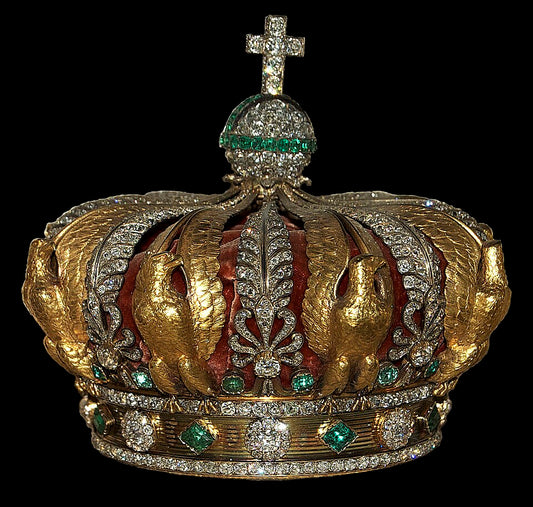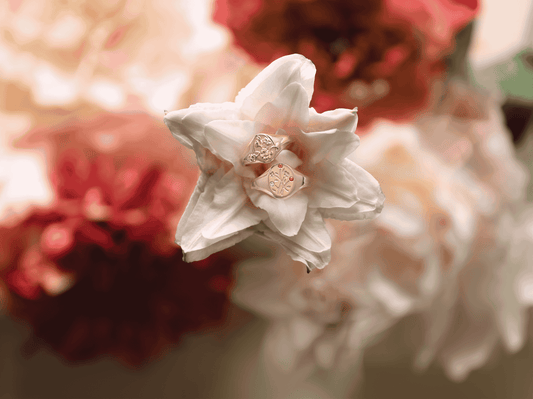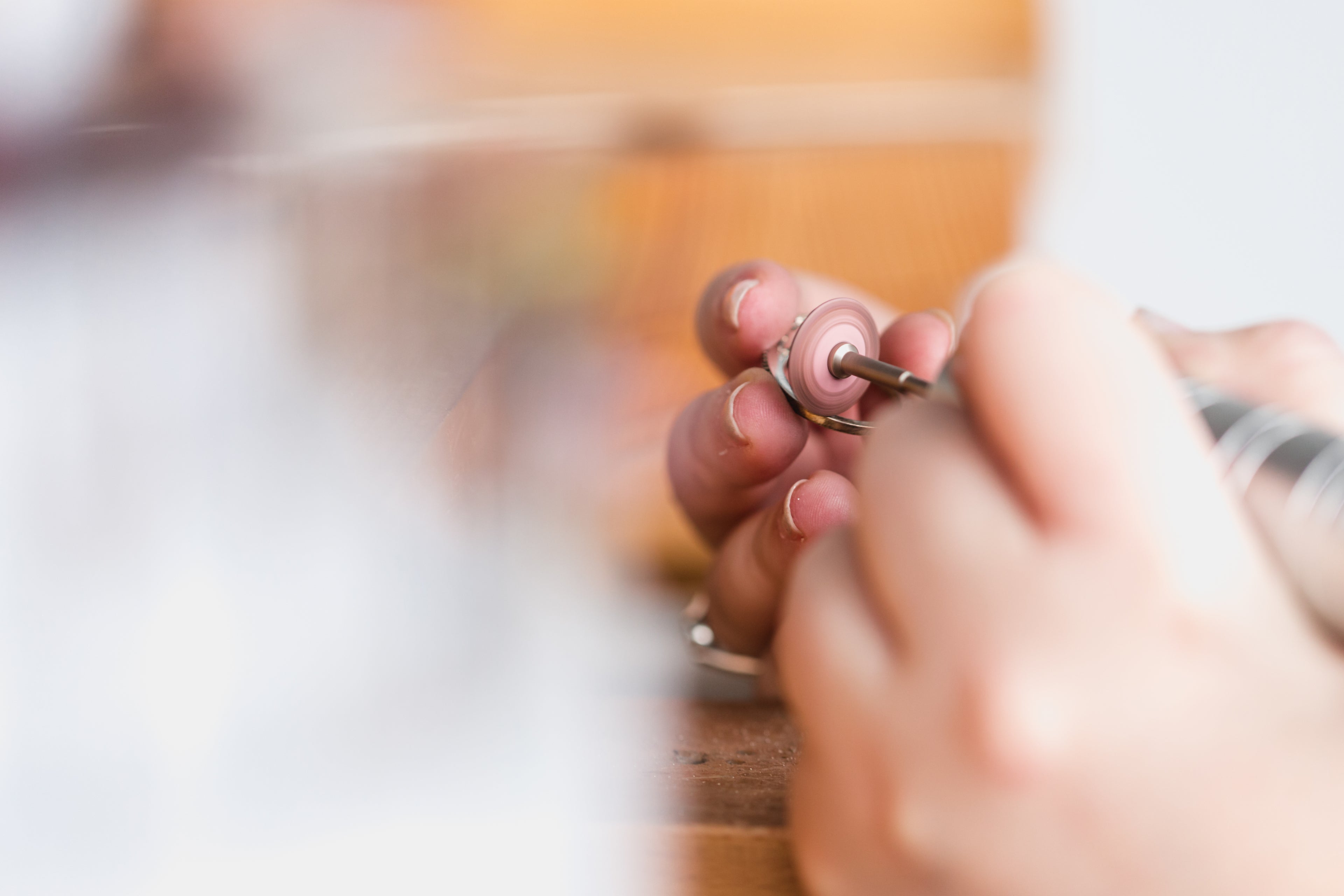What We Talk About When We Talk About Platinum
There’s a moment at the bench when you’re working with platinum that reminds you just how different it is. It’s not just the weight—though that’s part of it. It’s the feel. It doesn’t bend the same way gold does. It resists you. It holds its shape like it has something to prove.
There’s a mystique around platinum. It’s often framed as the most luxurious, the most durable, the "best" metal for fine jewelry. And don’t get me wrong—sometimes it really is. But I’ve learned over the years that what’s "best" is always relative. The real answer? It depends. On the piece. On the person. On the moment it’s meant to honor.
The Qualities That Make Platinum Shine
There are reasons platinum holds its place in high-end jewelry—and they’re good ones:
- Hypoallergenic: Platinum is a top choice for anyone with sensitive skin or metal allergies. Unlike white gold (which is often alloyed with nickel), platinum is safe and inert.
- Naturally white(ish): Platinum isn’t bright white like rhodium-plated gold—it has a naturally soft gray-white tone, often described as silvery or steely. Some people love its muted elegance. Others expect more brilliance.
- Incredibly dense: This density offers excellent security for gemstones, especially in prong settings.
- Durability: While gold gradually wears away over time, platinum deforms instead of thinning—making it ideal for heirloom pieces meant to last generations.
- Engraving-friendly: The softness of platinum allows for deep, crisp engravings that stand the test of time.
- Symbolism: Many people choose platinum because it represents endurance, rarity, and legacy.
Platinum Comes With Some Tradeoffs
Of course, all that strength comes at a cost—literally and figuratively.
- More labor-intensive: Platinum takes longer to cast, polish, resize, and repair. Jewelers often charge more for working with it.
- Heavier: Its weight feels substantial—luxurious to some, too heavy for others. When you drop it on a bench, it doesn’t clink—it thuds.
- Develops a patina: Over time, platinum doesn’t stay shiny. It takes on a soft gray matte finish. Some people love this lived-in look. Others find it dull. And if you want a mirror polish? Sure, you can get there (with a lot of muttering and cursing). But it won’t last long.
- Higher long-term costs: If you're planning for frequent resizing or adjustments, platinum might not be the easiest or most affordable material.
The Point of Platinum: Design That Uses Its Strengths
One of the biggest misconceptions I see is clients wanting to replicate a silver or gold design in platinum. But platinum isn’t just another precious metal—it’s a different animal entirely.
Platinum is denser than gold or silver—almost twice as heavy as 14k—and that density comes with an entirely different set of working properties. It’s harder, more stubborn, and more expensive by volume. A bezel and sheet that works beautifully in silver might weigh three times as much and cost sixty times more in platinum.
So what makes a good platinum design? One that takes advantage of its unique strengths. You can go finer, more delicate, more streamlined—because platinum can handle it. You don’t need to bulk it up for strength. The best platinum jewelry respects its toughness, its ability to hold its shape without reinforcement. Good platinum work is subtle. Refined. Confident.
That said, platinum is also extremely malleable—which can be both a feature and a challenge. While it’s technically harder than gold, its "squishiness" means it can flex under pressure rather than snap. That makes it great for durability overall—but if you’re setting a priceless diamond in a very fine four-prong head, for example, white gold might be a better option. Why? Because gold is typically alloyed with stiffer metals that offer better rigidity in extremely delicate structural applications. Platinum can bend; white gold resists.
And just between us? It’s not my favorite metal to work with. It’s fussy. It’s heavy. It’s expensive. You need special tools, special training, and a lot of patience. You get it to a mirror finish and blink—and there’s the patina again. For some designs, it’s more trouble than it’s worth. But when it’s right? It’s unforgettable. There’s a reason we say "the gold standard"—and not the platinum one.
You don't design platinum jewelry to look like silver. You design it to look like platinum.
Gold vs. Platinum: Two Different Tools, Not One Better Option
I never frame any metal as a "lesser" option. They're just different—and sometimes one is better than another. Here are the times gold might be a better fit:
- 14k gold: Tough, excellent for textured or stacking rings that see daily wear.
- 18k gold: Rich in color and softness, ideal for intricate details or antique-inspired pieces.
- White gold: Shiny and bright, perfect if you want a high-polish finish (with occasional rhodium maintenance).
- Rose and yellow gold: Add warmth, contrast, and personality.
Some designs simply work better in gold—especially lighter, daintier, or highly detailed pieces.
How Lifestyle and Legacy Shape My Recommendation
When I help clients choose a metal, I always ask questions like:
- Will you wear this every day?
- Do you work with your hands?
- Is it important that this piece be passed down someday?
- Will you want it resized later, or engraved?
- How do you feel about long-term maintenance?
Sometimes platinum is perfect. Sometimes it's overkill. My job is to help you find what actually fits your life.
Responsible Sourcing and Recyclability
Both gold and platinum are recyclable and can be sourced responsibly—but it takes intention. I partner with suppliers who prioritize ethical mining practices, reclaimed metals, and transparency.
Platinum is often seen as the "cleaner" metal, but that depends on the source. I help my clients choose materials based not just on appearance or prestige, but on values and performance.
Real-Life Studio Stories
These aren’t singular anecdotes, but rather composites of the many clients I've worked with over the years—each representing patterns I’ve seen again and again:
- One of my clients, a nurse who spends most of her day on her feet and washing her hands, needed a ring that could withstand constant wear. We created a platinum bezel-set solitaire that could take the daily use without worry—and she loved the patina that developed over time.
- Another client came to me with a strict budget and a dream of a statement ring with a large center stone. Platinum was simply out of reach, so we used yellow gold instead. It balanced the budget and complemented the warm tones of her yellow sapphire—without compromising her vision.
- For a client redesigning her grandmother’s vintage amethyst ring, we chose 18k gold. It offered the warmth and historical continuity she wanted, and it gave her the flexibility to resize or adjust the ring for future generations—something that would have been more difficult (and expensive) with platinum.
Your Jewelry Should Fit You in Every Way
Platinum isn’t the "right" metal. It’s just the right metal for the right person. Jewelry should fit your story, your skin, your habits, and your hopes.
If you’re not sure which metal is right for your next piece, that’s completely okay. I’m here to help figure it out.
Curious About What’s Right for You?
Book a consultation or send in your pieces using our Precious Cargo Kit. We’ll talk about your lifestyle, your vision, and what makes sense long-term—not just what looks good in a case.
Let’s make something that lasts—beautifully.





